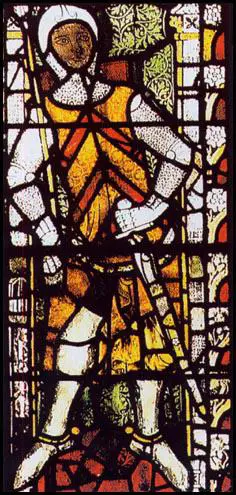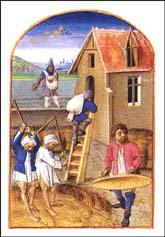Gilbert the Red
Gilbert, the son of Richard, 8th Earl of Clare, was born on 2nd September, 1243. His mother was Maud, the daughter of John de Lacy, Earl of Lincoln. He had bright red hair and soon became known as Gilbert the Red. When Gilbert was nine years old he married Alice of Angouleme, a niece of Henry III.
Gilbert's father controlled Glamorgan in Wales. By 1245 Richard also held the lordships of Llanbleddian, Talyfan and Rhuthin. To maintain control over the area he built a new castle at Llantrisant. The following year, he added Usk and Caerleon to his territory in Wales.
Gilbert inherited his father's estates in 1262 and became the 9th Earl of Clare, the 7th Earl of Hertford and the 8th Earl of Gloucester. Gilbert was a supporter of Simon de Montfort against the rule of Henry III. The two sides met at Lewes in Sussex on 14th May 1264. The bishops of Chichester, London and Worcester, who were all supporters of Simon de Montfort, attempted to negotiate a truce before the battle started. However Henry, who had a much larger army and was confident of victory, refused to do a deal.
In the battle Gilbert led the centre of the baronial army. Simon de Montfort had recently broken his leg falling from a horse and had to direct operations while sitting in a cart. However, it did not stop him winning a famous victory. At the end of the battle the king had been captured and those members of his army that had survived had fled from the battlefield.
Montfort and Gilbert now organized a new parliament. As well as barons and leaders of the church, two representatives from each town were invited to attend parliament. The day-to-day running of the country was carried out by three men: Simon de Montfort, Gilbert the Red and the Bishop of Chichester.
Gilbert supported these parliamentary reforms but was unhappy when he heard that Montfort planned to form an alliance with the Welsh prince, Llewellyn ap Gruffudd. Gilbert had been in conflict with Llewellyn over lands that he owned in Glamorgan. Gilbert argued with Simon de Montfort and left London.
In June 1265 Gilbert met the king's son, Prince Edward, in Ludlow. The two men raised an army and began their campaign by capturing Gloucester. When Montfort heard about the size of his enemy's army, he is reported to have said: "Let us commend our souls to God, because our bodies are theirs."
A dawn attack at Kenilworth on 2nd August 1265 took forces led by Montfort's son by surprise. The following day Montfort's main army was attacked at Evesham. Prince Edward's army had an easy victory and Montfort's outnumbered army was slaughtered. After Simon de Montfort had been killed, his body was mutilated. His head was cut off and displayed round the country as a warning of what happened to people who rebelled against their king.
On 8th September 1265 Gilbert was present in Winchester when the rebel lords were disinherited of their estates. The following year Gilbert accompanied Prince Edward in his expedition against the Cinque Ports.
As Gilbert was busy in England, the Welsh chieftains led by Gruffydd ap Rhys, took this opportunity to try and win back Glamorgan from the Clare family. In 1266 Gilbert returned to Wales and soon afterwards managed to capture Gruffydd ap Rhys. He imprisoned him in Cardiff and later had him transported to Ireland where he was kept at Clare Castle in Kilkenny.

at Tewkesbury Abbey (1340)
In 1270 Gilbert agreed to accompany Henry III on a crusade to secure Christian control over the holy places in Palestine. Just before he was due to leave, Gilbert heard news that Llywelyn ap Gruffydd had seized and destroyed his castle at Caerphilly. Instead of going to the Holy Land, Gilbert the Red took his knights to Wales. After he won back Caerphilly, Gilbert decided to build a massive stone fortress that would be impossible to capture. When Caerphilly Castle was completed it was considered to be the strongest castle in Britain.
Henry III died in 1272 and his son Edward became king. Gilbert immediately declared his fealty to Edward. However, Gilbert the Red controlled over 500 manors in England, Wales and Ireland. The king became concerned about the power of Gilbert and he decided that he had to find a way of guaranteeing his loyalty. In 1283, the king suggested that Gilbert should divorce his wife Alice, disinherit his children, and marry Joan, his 11 year old daughter.
Gilbert was unhappy with King Edward's proposal. Gilbert was 40 years old and he knew that if he died before Joan had a child, all his lands would become the property of the king. Before Gilbert could get divorced and remarried he had to obtain permission from the Pope. Gilbert hoped that the Pope would say no but after a six year delay, permission was at last given for the marriage to take place.
In the next six years Joan had four children, Gilbert, Eleanor, Margaret and Elizabeth. Gilbert the Red died on 7th December, 1295.

